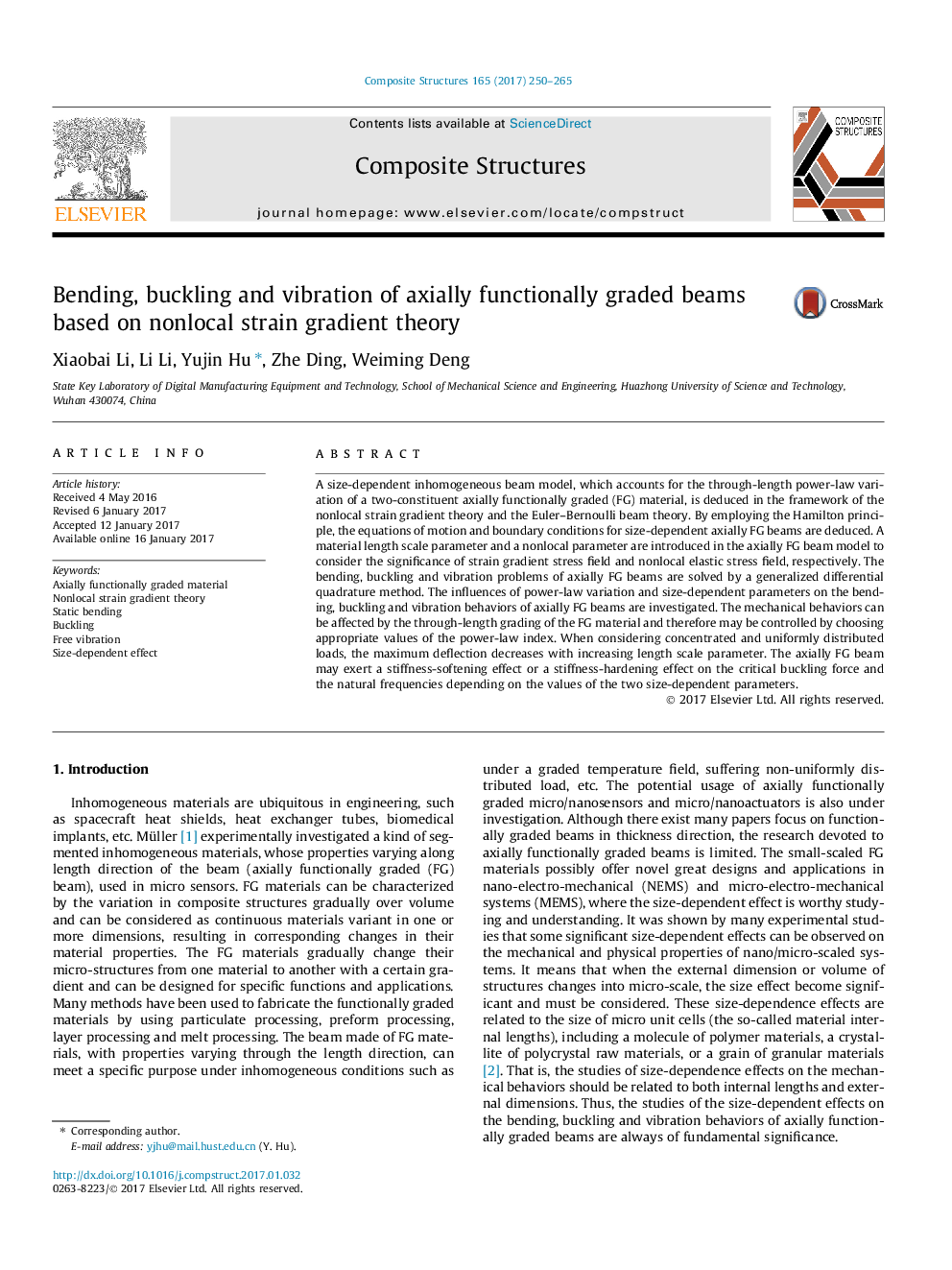| Article ID | Journal | Published Year | Pages | File Type |
|---|---|---|---|---|
| 6479499 | Composite Structures | 2017 | 16 Pages |
A size-dependent inhomogeneous beam model, which accounts for the through-length power-law variation of a two-constituent axially functionally graded (FG) material, is deduced in the framework of the nonlocal strain gradient theory and the Euler-Bernoulli beam theory. By employing the Hamilton principle, the equations of motion and boundary conditions for size-dependent axially FG beams are deduced. A material length scale parameter and a nonlocal parameter are introduced in the axially FG beam model to consider the significance of strain gradient stress field and nonlocal elastic stress field, respectively. The bending, buckling and vibration problems of axially FG beams are solved by a generalized differential quadrature method. The influences of power-law variation and size-dependent parameters on the bending, buckling and vibration behaviors of axially FG beams are investigated. The mechanical behaviors can be affected by the through-length grading of the FG material and therefore may be controlled by choosing appropriate values of the power-law index. When considering concentrated and uniformly distributed loads, the maximum deflection decreases with increasing length scale parameter. The axially FG beam may exert a stiffness-softening effect or a stiffness-hardening effect on the critical buckling force and the natural frequencies depending on the values of the two size-dependent parameters.
